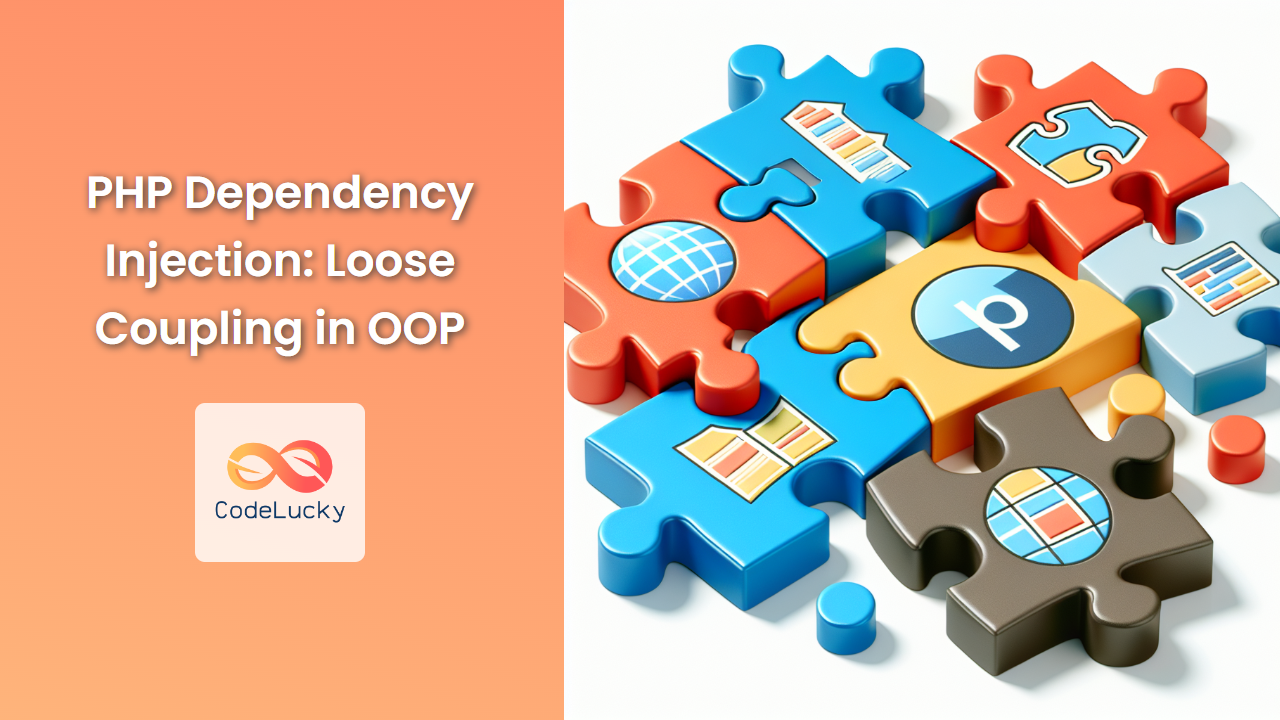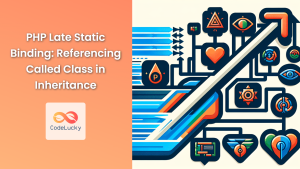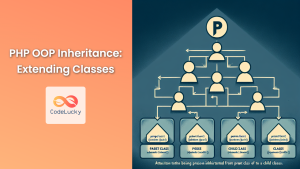In the world of Object-Oriented Programming (OOP), one of the most powerful techniques for creating flexible and maintainable code is Dependency Injection (DI). This concept is crucial for PHP developers aiming to write clean, modular, and easily testable code. In this comprehensive guide, we'll dive deep into the world of Dependency Injection in PHP, exploring its benefits, implementation techniques, and real-world applications.
Understanding Dependency Injection
Dependency Injection is a design pattern that allows us to develop loosely coupled code by removing the responsibility of creating and managing dependencies from a class. Instead, these dependencies are "injected" into the class from the outside. This approach promotes better separation of concerns, easier testing, and more flexible code structure.
🔑 Key Concept: Dependency Injection is about giving an object its instance variables rather than having it create them itself.
Let's start with a simple example to illustrate the problem that Dependency Injection solves:
class UserManager {
private $database;
public function __construct() {
$this->database = new MySQLDatabase();
}
public function saveUser($user) {
$this->database->insert('users', $user);
}
}
In this example, the UserManager class is tightly coupled to the MySQLDatabase class. If we want to switch to a different database or use a mock database for testing, we'd have to modify the UserManager class directly. This is where Dependency Injection comes to the rescue.
Implementing Dependency Injection
Let's refactor our UserManager class to use Dependency Injection:
interface DatabaseInterface {
public function insert($table, $data);
}
class MySQLDatabase implements DatabaseInterface {
public function insert($table, $data) {
// MySQL-specific insert logic
}
}
class UserManager {
private $database;
public function __construct(DatabaseInterface $database) {
$this->database = $database;
}
public function saveUser($user) {
$this->database->insert('users', $user);
}
}
// Usage
$database = new MySQLDatabase();
$userManager = new UserManager($database);
Now, the UserManager class is no longer responsible for creating its database dependency. Instead, it receives the database object through its constructor. This is known as Constructor Injection, one of the most common forms of Dependency Injection.
🌟 Benefits:
- The
UserManageris now decoupled from the specific database implementation. - We can easily switch to a different database by creating a new class that implements
DatabaseInterface. - Testing becomes much easier as we can inject a mock database object.
Types of Dependency Injection
There are three main types of Dependency Injection in PHP:
- Constructor Injection: Dependencies are provided through a class constructor.
- Setter Injection: Dependencies are set through setter methods.
- Interface Injection: The dependency provides an injector method that will inject the dependency into any client passed to it.
Let's look at examples of each:
Constructor Injection (Already shown above)
Setter Injection
class UserManager {
private $database;
public function setDatabase(DatabaseInterface $database) {
$this->database = $database;
}
public function saveUser($user) {
$this->database->insert('users', $user);
}
}
// Usage
$userManager = new UserManager();
$userManager->setDatabase(new MySQLDatabase());
Interface Injection
interface DatabaseInjector {
public function injectDatabase(DatabaseInterface $database);
}
class UserManager implements DatabaseInjector {
private $database;
public function injectDatabase(DatabaseInterface $database) {
$this->database = $database;
}
public function saveUser($user) {
$this->database->insert('users', $user);
}
}
// Usage
$userManager = new UserManager();
$database = new MySQLDatabase();
$userManager->injectDatabase($database);
Each type of injection has its use cases, but Constructor Injection is generally preferred as it ensures that the dependency is available throughout the object's lifetime.
Real-World Example: Building a Flexible Logging System
Let's create a more complex example to demonstrate the power of Dependency Injection in a real-world scenario. We'll build a flexible logging system that can log to different destinations (file, database, email) without modifying the core logging logic.
First, let's define our interfaces:
interface LoggerInterface {
public function log($message);
}
interface LogFormatterInterface {
public function format($message);
}
Now, let's create some concrete implementations:
class FileLogger implements LoggerInterface {
private $filePath;
public function __construct($filePath) {
$this->filePath = $filePath;
}
public function log($message) {
file_put_contents($this->filePath, $message . PHP_EOL, FILE_APPEND);
}
}
class DatabaseLogger implements LoggerInterface {
private $db;
public function __construct(PDO $db) {
$this->db = $db;
}
public function log($message) {
$stmt = $this->db->prepare("INSERT INTO logs (message) VALUES (:message)");
$stmt->execute(['message' => $message]);
}
}
class SimpleFormatter implements LogFormatterInterface {
public function format($message) {
return "[" . date('Y-m-d H:i:s') . "] " . $message;
}
}
class JsonFormatter implements LogFormatterInterface {
public function format($message) {
return json_encode([
'timestamp' => date('Y-m-d H:i:s'),
'message' => $message
]);
}
}
Now, let's create our main Logger class that uses Dependency Injection:
class Logger {
private $logger;
private $formatter;
public function __construct(LoggerInterface $logger, LogFormatterInterface $formatter) {
$this->logger = $logger;
$this->formatter = $formatter;
}
public function log($message) {
$formattedMessage = $this->formatter->format($message);
$this->logger->log($formattedMessage);
}
}
With this setup, we can easily create different logger configurations:
// File logger with simple formatting
$fileLogger = new FileLogger('/path/to/log.txt');
$simpleFormatter = new SimpleFormatter();
$logger1 = new Logger($fileLogger, $simpleFormatter);
// Database logger with JSON formatting
$dbConnection = new PDO('mysql:host=localhost;dbname=myapp', 'username', 'password');
$dbLogger = new DatabaseLogger($dbConnection);
$jsonFormatter = new JsonFormatter();
$logger2 = new Logger($dbLogger, $jsonFormatter);
// Usage
$logger1->log("This is a log message");
$logger2->log("This is another log message");
This example demonstrates how Dependency Injection allows us to create a flexible logging system where we can easily swap out the logging destination and message format without modifying the core Logger class.
Benefits of Dependency Injection
Let's summarize the key benefits of using Dependency Injection in PHP:
-
Loose Coupling: Classes are not directly dependent on concrete implementations, making the system more modular.
-
Improved Testability: Dependencies can be easily mocked or stubbed in unit tests.
-
Flexibility: It's easier to switch implementations or add new features without modifying existing code.
-
Separation of Concerns: Each class focuses on its core functionality, improving code organization.
-
Reusability: Components become more reusable across different parts of the application or even in different projects.
Best Practices for Dependency Injection in PHP
To make the most of Dependency Injection in your PHP projects, consider these best practices:
-
Use Interfaces: Define interfaces for your dependencies to allow for easy swapping of implementations.
-
Prefer Constructor Injection: It ensures that the object is in a valid state from creation and clearly communicates dependencies.
-
Avoid Service Locator Pattern: While it might seem similar, the Service Locator pattern can hide class dependencies and make code harder to maintain.
-
Use a Dependency Injection Container: For larger applications, consider using a DI container like PHP-DI or Symfony's DependencyInjection component to manage your object graph.
-
Keep It Simple: Don't over-engineer. Use DI where it provides clear benefits in terms of flexibility and testability.
Conclusion
Dependency Injection is a powerful technique in PHP that promotes loose coupling, improves testability, and enhances the overall flexibility of your codebase. By understanding and applying DI principles, you can create more maintainable and scalable PHP applications.
Remember, the goal of Dependency Injection is not just to make your code more complex, but to make it more modular and easier to manage in the long run. As you become more comfortable with this pattern, you'll find that it naturally leads to better-designed, more robust PHP applications.
🚀 Pro Tip: Start incorporating Dependency Injection in your next PHP project. Begin with simple cases and gradually apply it to more complex scenarios as you become more comfortable with the concept.
By mastering Dependency Injection, you're taking a significant step towards becoming a more proficient PHP developer, capable of creating flexible, testable, and maintainable code. Happy coding!



















